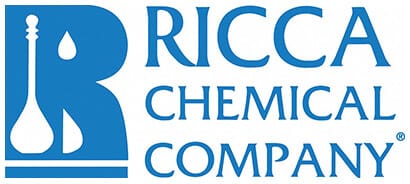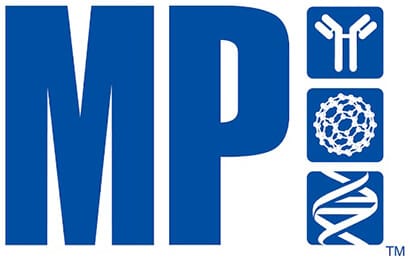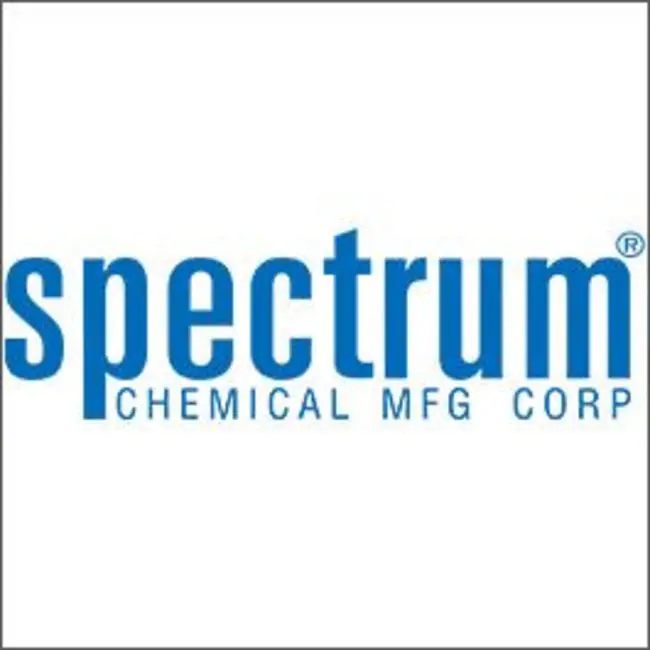50μg (1mg/ml)
Showing all 5 results
-

GenCrispr Cas9-C-NLS Nuclease
$125.93 Add to cart View Product DetailsGenCrispr Cas9-C-NLS nuclease is the recombinant Streptococcus pyogenes
Cas9 (wt) protein with a C-terminal nucleic localization signal (NLS) that can be used for genome editing by inducing site-specific DNA double stranded breaks. Cas9 protein forms a very stable ribonucleoprotein (RNP) complex with the guide RNA (gRNA) component of the CRISPR/Cas9 system, which can localize to the nucleus immediately once entering the cell with the guide of the NLS. Compared with the mRNA or plasmid systems, transcription and translation processes are not required. This DNA-free system avoids the risk of inserting foreign DNA into the genome, which can be quite useful for gene editing-based disease therapy. Our highly pure and active Cas9 nuclease meets all of the researcher’s requirements (e.g. in vitro
cleavage assay, RNP complex transfection, micro injection).Product Source:
GenCrispr Cas9-C-NLS is produced by expression in an
E. coli
strain carrying a plasmid encoding the Cas9 gene from
Streptococcus pyogenes
with a C terminal nuclear localization signal (NLS).Key features:
- DNA-free: no external DNA added to system.
- High cleavage efficiency: NLS ensures the entry of Cas9 protein into nuclei.
- Low off target: transient expression of Cas9 nuclease.
- Time-saving: no need for transcription and translation.
With this Cas9 Nuclease, you can:
- Screening the highly efficient and specific targeting gRNAs using
in vitro
DNA cleavage. -
In vivo
gene editing combined with specific gRNA by electroporation or injection.
-

GenCrispr Cas9-N-NLS Nuclease
$125.93 Add to cart View Product DetailsGenCrispr Cas9-N-NLS nuclease is the recombinant Streptococcus pyogenes Cas9 (wt) protein with a N-terminal nucleic localization signal (NLS) that can be used for genome editing by inducing site-specific DNA double stranded breaks. Cas9 protein forms a very stable ribonucleoprotein (RNP) complex with the guide RNA (gRNA) component of the CRISPR/Cas9 system, which can localize to the nucleus immediately once entering the cell with the guide of the NLS. Compared with the mRNA or plasmid systems, transcription and translation processes are not required. This DNA-free system avoids the risk of inserting foreign DNA into the genome, which can be quite useful for gene editing-based disease therapy. Our highly pure and active Cas9 nuclease meets all of the researcher´s requirements (e.g. in vitro cleavage assay, RNP complex transfection, micro injection).
Product Source: GenCrispr Cas9-N-NLS is produced by expression in an E. coli strain carrying a plasmid encoding the Cas9 gene from Streptococcus pyogenes with a N-terminal nuclear localization signal (NLS).
Key features:
- DNA-free: no external DNA added to system.
- High cleavage efficiency: NLS ensures the entry of Cas9 protein into nuclei.
- Low off target: transient expression of Cas9 nuclease.
- Time-saving: no need for transcription and translation.
With this Cas9 Nuclease, you can:
- Screening the highly efficient and specific targeting gRNAs using in vitro DNA cleavage.
- In vivo gene editing combined with specific gRNA by electroporation or injection.
-

GenCrispr NLS-Cas9-D10A Nickase
$95.74 Add to cart View Product DetailsGenCrispr NLS-Cas9-D10A Nickase is a mutation form of Cas9 Nuclease. Cas9 nuclease is an RNA-guided endonuclease that can catalyze cleavage of double stranded DNA. This kind of targeted nuclease is a powerful tool for genome editing with high precision. Cas9 nuclease cleaves the double strand DNA generating two break sites based on its two active domains. NLS-Cas9-D10A Nickase is a mutation form of Cas9 Nuclease which makes one active domain deactivated, thus it can only cut one single strand DNA that is complementary to the guide-RNA, producing one single strand cut. Combined with two different gRNA, NLS-Cas9-D10A Nickase produces two cut sites respectively and causes a double strand break. Compared with the wild type Cas9 nuclease, the two-gRNA guided cleavage can significantly reduce the off target effects.
Product Source: GenCripsr NLS-Cas9-D10A Nickase is highly purified mutant proteins expressed in an E. coli strain carrying a plasmid encoding the mutated Cas9 gene from Streptococcus pyogenes.
Key features:
- DNA-free: no external DNA added to system.
- High cleavage efficiency: NLS ensures the efficient entry of Cas9 protein into nuclei.
- Low off target: Double gRNA-guided cleavage and transient expression of Cas9 nuclease.
- Time-saving: no need for transcription and translation.
With this Cas9 Nuclease, you can:
- Screening the highly efficient and specific targeting gRNAs using in vitro DNA cleavage.
- In vivo gene editing combined with specific gRNA by electroporation or injection.
-

GenCrispr NLS-Cas9-EGFP Nuclease
$162.15 Add to cart View Product DetailsGenCrispr NLS-Cas9-EGFP is a fusion protein developed by GenScript. It contains a nuclear localization signal (NLS) on its N terminal end, and an EGFP and a 6x(His) sequence on the C terminal end. Cas9 nuclease is an RNA-guided endonuclease that can catalyze cleavage of double stranded DNA. This kind of targeted nuclease is a powerful tool for genome editing with high precision. Cas9 protein forms a highly stable ribonucleoprotein (RNP) complex with the guide RNA (gRNA) component of the CRISPR/Cas9 system. When Cas9 is expressed with an NLS sequence, the Cas9 RNP complex can localize to the nucleus immediately upon entering the cell. There is no requirement for in vivo transcription or translation, which improves the efficiency of this method over plasmid-based systems. Additionally, the Cas9 RNP complex is rapidly cleared from the cells minimizing the chance of off-target cleavage when compared to other systems (Kim, et al. 2014). The EGFP tag can be used as a reporter for tracking or sorting transfected cells, which enables enrichment of cell populations for desired genome edits via fluorescence activated cell sorting (FACS). It significantly reduces the labor and cost associated with single cell cloning and genotyping in genome editing applications.
Product Source: GenCrispr NLS-Cas9-EGFP is produced by expression from an E. coli strain.
Key Features
– DNA-free: no external DNA added to system
– High cleavage efficiency: NLS ensures the efficient entry of the Cas9 protein into nuclei
– Low off target effects: transient expression of Cas9 nuclease improves specificity of cleavage
– Time-saving: no need for transcription and translation
– Reduced labor: enrich cell populations for desired genome edits via EGFP-based FACS. The C-terminal His-tag increases the choice of detection methods for the fusion protein.Applications
– Screening for highly efficient and specific targeting gRNAs by in vitro DNA cleavage.
– In vivo gene editing when combined with a specific gRNA by electroporation or injection.
– Enrichment of cell populations for desired genome edits via EGFP-based FACS. -

GenCrispr NLS-Cas9-NLS Nuclease
$125.93 Add to cart View Product DetailsGenCrispr NLS-Cas9-NLS nuclease is the recombinant Streptococcus pyogenes Cas9 (wt) protein with a nucleic localization signal (NLS) on both N and C terminal, which can be used for genome editing by inducing site-specific DNA double stranded breaks. Cas9 protein forms a very stable ribonucleoprotein (RNP) complex with the guide RNA (gRNA) component of the CRISPR/Cas9 system, which can localize to the nucleus immediately once entering the cell with the guide of the NLS. Compared with the mRNA or plasmid systems, transcription and translation processes are not required. This DNA-free system avoids the risk of inserting foreign DNA into the genome, which can be quite useful for gene editing-based disease therapy. Our highly pure and active Cas9 nuclease meets all of the researcher´s requirements (e.g. in vitro cleavage assay, RNP complex transfection, micro injection).
Product Source: GenCrispr NLS-Cas9-NLS is produced by expression in an E. coli strain carrying a plasmid encoding the Cas9 gene from Streptococcus pyogenes with a double-ends nuclear localization signal (NLS).
Key features:
- DNA-free: no external DNA added to system.
- High cleavage efficiency: Double NLS ensures the efficient entry of Cas9 protein into nuclei.
- Low off target: transient expression of Cas9 nuclease.
- Time-saving: no need for transcription and translation.
With this Cas9 Nuclease, you can:
- Screening the highly efficient and specific targeting gRNAs using in vitro DNA cleavage.
- In vivo gene editing combined with specific gRNA by electroporation or injection.






